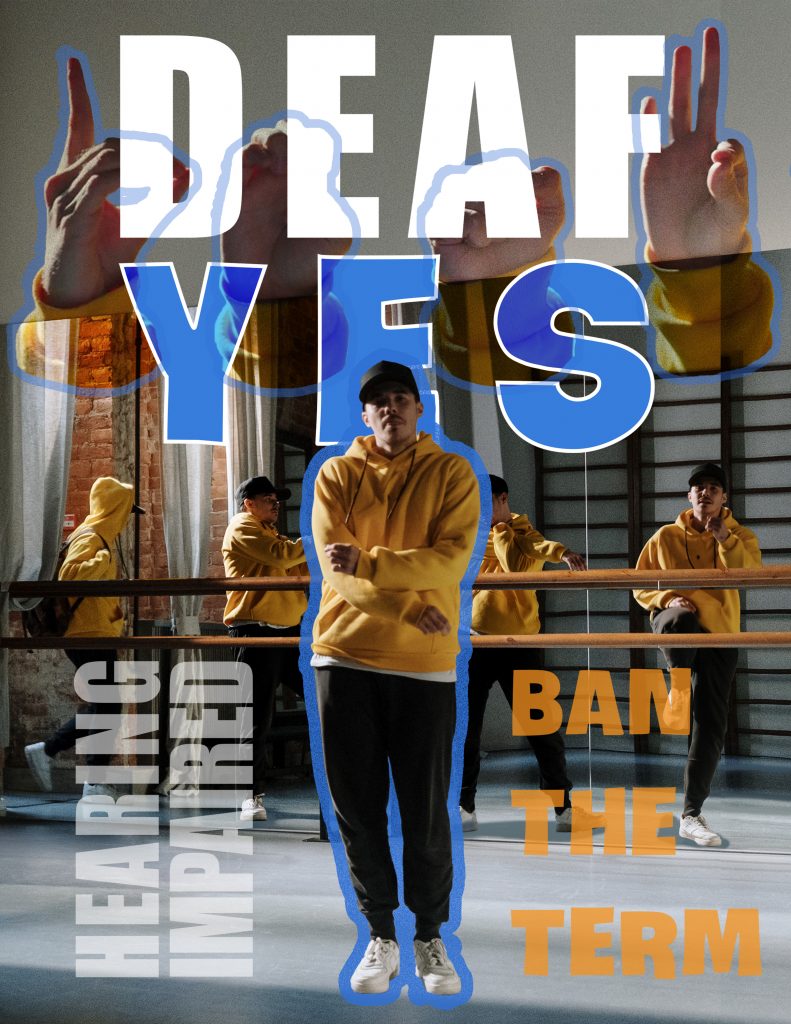Enhancing Deaf YES!

Historically, the Deaf Community labeled themselves as Deaf. People with varying degrees of hearing loss – even a mild loss – who use American Sign Language (ASL) views themselves as Deaf. As a linguistic minority, with its own language and culture, the Deaf Community embraces and cherished the term “Deaf.” Generally, prior to the age of science, individuals who did not utilize ASL and had a hearing loss considered themselves deaf (without a Capital D).
In the 1950s and 1960s the medical and legal communities coined the term “hearing impaired” without input or consideration for the Deaf Community. Enhancing and highlighting the term Deaf, both the Deaf and allies to the Deaf Community can work towards banning the term hearing impaired.
The term hearing impaired is a multipronged assault on the Deaf Community. As mentioned, the Deaf were not included in the conversation to change how they’d be addressed. Deaf are not hearing. The implication is that hearing is the standard and, as such, being defined solely based on that label is oppressive. While some may not find this as offensive, let’s frame it from a non-Deaf lens – would a woman be labeled as man impaired? When we, as a society, are able to compare and contrast oppression from the lens of other c/Communities we can more clearly see how the term hearing is balancing the non-Deaf community as superior.
Examining the term impaired is also warranted. Because a Deaf person can or cannot do something, this does not automatically imply they are impaired. A high percentage of people who are hearing do not possess musical talent. Those folks are not innately impaired because they do not have the want, desire, or ability to perform music. While there are d/Deaf musicians, their talent in music is not because they are Deaf or non-Deaf.
The artwork, Enhancing Deaf YES!, expresses banning the expression “hearing impaired” and spotlights the term Deaf in a powerful light. The artwork positively invokes the term Deaf, which has been used since the beginning of time until the age of science and technology, and aims to express the oppressive term, hearing impaired, as prohibitive. Through digital manipulation, replication, and the creation of a unique environment, Enhancing Deaf YES! empowers the Deaf community with shows of confidence, strength, and pride.
Back to Top of Page | Back to Art | Back to Volume 17, Issue 2 – Winter 2023-2024
About the Artists
Angel Hinojoza Gandara was born in Mexico and raised in Texas. Currently an undergrad student at University of Texas at Arlington, he is studying to earn his BFA in Visual Communication Design with a minor in Disability Studies. Having lived with his stuttering since the age of 9, he believes everyone has a right to efficiently communicate. Angel is an ally of ASL and the Deaf community.
Lisalee D. Egbert, Ph.D., who is Deaf, is a professor and coordinator of Modern Languages at the University of Texas at Arlington, research early education and Deaf Education focusing on American Sign Language/English bilingual-bicultural education as it relates to literacy. Her work explores the inter-development of language, literacy, and cognition within the framework of social justice and equality. Addressing her Native American heritage and her first sign language, Plains Indian Sign Language, she contributed to an eBook focused on Native Americans.